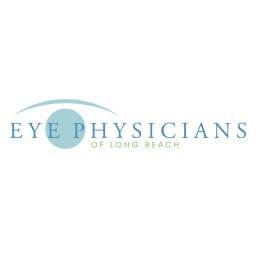Blog post by: Eye Physicians of Long Beach

Recently I have had a number of patients referred to me by their neurologist for treatment of their visual loss from pseudotumor cerebri. The first question that many of the relatives ask the patient is: “what is pseudotumor cerebri?”
Pseudotumor cerebri AKA idiopathic intracranial hypertension AKA Benign intracranial hypertension
Idiopathic intracranial hypertension is a condition in which there is increased pressure inside the head without any obvious cause. This generally results in swelling of the optic disc (the point where the optic nerve meets the eye). The swelling in turn causes a potential threat to sight
Causes, incidence, and risk factors
The condition occurs more often in women than men, especially in obese women who are about to go through menopause. Although it is rare in infants, I have managed this condition in several children.
The cause is unknown. Symptoms include:
-
Blurred vision
-
Ringing sound in the ears
-
Dizziness
-
Doublevision
-
Nausea
-
Vision loss
Treatment for patients can be divided into medical treatment and surgical treatment. The most important medical treatment is weight loss. It has been shown that loss of 5-10% of body weight is often enough for optic disc edema to improve and for symptoms to resolve.
Diamox (acetazolamide) is the most commonly used medication. It is relatively safe but nearly all patients experience tingling of the fingers and toes. This tingling is a benign symptom. Patients also experience a metallic taste when drinking carbonated beverages. Less commonly, kidney stones can occur and rarely other blood disorders.
The surgical treatments currently used are optic nerve sheath fenestration (making a window in the lining of the optic nerve to allow fluid to drain away) and CSF shunting procedures (running a tube from the spinal fluid space into the abdominal cavity or a vein). These procedures are used when patients do not respond adequately to medical therapy.
Contrary to public belief, the eye is not removed, nor is there any way to put the eye back in after taking it out. When performing an optic nerve sheath fenestration, one of the muscles that controls eye movements is detached (similar to surgery for lazy eye in children). In the space between the detached muscle and the surface of the eye, the nerve is brought in to view by rotating the eye away from the nose. This rotation brings the nerve into the field of the microscope. I small blade is then used to create a window in the covering of the nerve. This window allows fluid to escape from the nerve to relieve the pressure from the nerve. The eye is then returned to its resting position and the muscle is sutured in to its normal position.
The second surgical procedure, called CSF shunting, is done as follows. Tubing is placed in the spinal fluid space, (either the space entered during a lumbar puncture or space in or around the brainand tubing is then run to the abdomen or a vein. This lowers the pressure around the brain and optic nerve, thereby eliminating the symptoms of raised intracranial pressure. Unfortunately, these procedures are complicated by various problems, the most severe one being some patients have periodic occlusion of the tubing with recurrence of symptoms and sometimes vision loss.
Comparison of shunt vs optic nerve sheath fenestration
-
Feldon[45] performed a meta-analysis of existing literature comparing visual outcomes after the following:
-
17 intracranial venous sinus stent placements; improved/resolved visual defects 47%31 ventriculoperitoneal (VP) shunt placements; improved/resolved visual defects 38.7%
-
44 lumboperitoneal (LP) shunt placements; improved/resolved visual defects 44.6%
-
252 optic nerve sheath decompressions; improved/resolved visual defects 80%
-
Visual worsening was rare for all procedures. The author concluded that visual outcome was best documented for optic nerve sheath fenestration and appeared to be the best surgical procedure for vision loss in IIH
To summarize, idiopathic intracranial hypertension can have serious vision threatening consequences. Patients with this condition should be constantly monitored for visual loss. Once visual loss is detected despite maximal medical therapy, patients should seriously consider having an optic nerve sheath fenestration procedure. The procedure itself is an outpatient procedure that takes approximately 1 hour. It is performed under general anesthesia. The procedure typically has a very high success rate for preserving vision.
